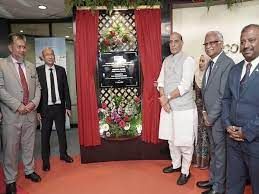UPSC Daily Current Affairs- 13th July 2023 | Current Affairs & Hindu Analysis: Daily, Weekly & Monthly PDF Download
GS-I
World past Holocene Epoch: Anthropocene began in 1950
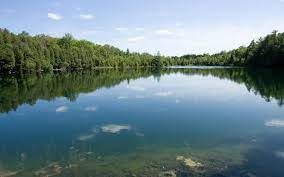
Why in News?
AWG’s Proposal: The Anthropocene Working Group (AWG) proposes a new geological epoch called the Anthropocene.
- Reference Point: The unique reference point for the Anthropocene is Crawford Lake near Toronto in Canada’s Ontario Province.
Understanding the Anthropocene Epoch
- Coined Term: The Anthropocene epoch was first coined by Nobel Prize-winning chemist Paul Crutzen and biology professor Eugene Stoermer in 2000.
- Human Impact: The Anthropocene represents the geological time interval characterized by radical changes in the Earth’s ecosystem due to human impact, particularly since the onset of the Industrial Revolution.
- Environmental Changes: Numerous phenomena associated with the Anthropocene include global warming, sea-level rise, ocean acidification, mass-scale soil erosion, deadly heat waves, and environmental deterioration.
- Geological Strata: The AWG’s website states that these changes are reflected in a distinctive body of geological strata, with the potential to be preserved into the far future.
Evidence from Crawford Lake
- Selected Site: Crawford Lake in Canada’s Ontario Province was chosen by geologists for examination over 11 other potential sites.
- Preserved Sediments: The lake’s layers of sediment have preserved the annual impact of human activities on the Earth’s soil, atmosphere, and biology.
- Shift in Mid-20th Century: The analysis of Crawford Lake’s bottom sediments reveals a clear shift from the mid-20th century, surpassing the bounds of the previous Holocene epoch.
- Captured Fallout: Over the years, the lake’s sediments have captured the fallouts of large-scale burning of fossil fuels, explosion of nuclear weapons, and dumping of plastic and fertilizers on land and in water bodies.
Debate and Disagreements
- Scientific Community Disagreements: Not all geologists agree on the reality of the Anthropocene epoch.
- Debate Points: Disagreements revolve around the precise start of the epoch, whether it has already begun, and the sufficiency of evidence to prove its advent.
The Geological Time Scale
- Divisions and Categories: The Earth’s geological time scale is divided into five broad categories: eons, eras, periods, epochs, and ages.
- Fossil-Based Boundaries: Boundaries on the geological time scale correspond to the origination or extinction of specific types of fossils.
- Current Classification: Currently, we are in the Phanerozoic eon, Cenozoic era, Quaternary period, Holocene epoch, and Meghalayan age.
AWG’s Findings and Next Steps
- Selection of Crawford Lake: Crawford Lake was chosen due to its preserved sediment layers that provide an annual record of human impact.
- Overwhelming Effects: Distinct and multiple signals in the lake’s sediments starting around 1950 demonstrate that the effects of human activity overwhelm the Earth system.
- Unique Global ‘Fingerprint’: The presence of plutonium resulting from nuclear weapon detonations serves as a stark indicator of humanity’s dominant influence on the planet.
- Approval Process: The AWG plans to present a proposal to the Subcommission on Quaternary Stratigraphy (SQS) and the International Commission on Stratigraphy (ICS) for approval.
- Final Approval: The final approval is expected to be granted at the 37th International Geological Congress in Busan, South Korea, next year.
Conclusion
- Compelling Evidence: Geologists’ examination of Crawford Lake provides compelling evidence for the existence of the Anthropocene epoch.
- Challenging Conventional Timeline: The proposal for the Anthropocene epoch challenges the conventional understanding of the Earth’s official geological timeline.
- Future Determination: Further discussions and approvals by international geological bodies will determine the recognition and acceptance of the Anthropocene epoch.
Source: DTE
Extreme Rain Events in North India

Why in News?
Northern India is currently in the midst of an extremely wet phase of the monsoon due to extreme rain events.
Background
- India has received 26% more rainfall in July than expected and many North Indian states like Himachal Pradesh, Haryana, Punjab, Rajasthan, Uttarakhand and Ladakh witnessed unusual rain events.
- According to India Meteorological Department (IMD) an extremely heavy rainfall event is one in which more than 205 mm of rainfall happens at any place within a 24-hour period. Hundreds of such events, at different locations in the country, are recorded during the monsoon season every year.
Reasons for unusual rainfall
- Warming of Arabian Sea: Excess rainfall over northwest India is consistent with the Arabian Sea having warmed by about 1.5 degrees Celsius since January.June contributes only about 15% of the rainfall to the seasonal total. The instabilities in the atmosphere that drive convection are not strong enough to drive large-scale rainfall during the pre-monsoon season.
- Interaction between the monsoon winds and western disturbances: Rainfall in pre-monsoon was above normal due to a combination of the warm Arabian Sea and an unusually high number of western disturbances. As a result, soils were left moister than normal, which in turn affected the evolution of the monsoon.
- Warming of Atlantic Ocean: The Atlantic Ocean warming also tinkers with the monsoon. The entire Atlantic Ocean has been warmer than normal since March.
- Upper atmospheric circulation: The strongest winds that occur in the upper atmosphere can spontaneously break into clockwise and anticlockwise patterns, especially when they run into mountainous terrain, such as the Himalaya. Strong clockwise winds, with air flowing out from the center, in the upper atmosphere demand an anticlockwise circulation near the surface, in order to feed the upper-level outflow. Such a convergence near the surface can drive excess rainfall.
- Unequal warming of Himalayas: some parts of the mountain chain are leading to rapid local warming.These irregular weather patterns during the monsoon superpose on these local features and result in cloudbursts, heavy rains and heat waves.
- Climate change: With global warming, a warm and humid atmosphere acts like a steroid for the weather.The southwest monsoon carries additional moisture that evaporates due to the increased temperatures and causes intermittent short spells of heavy to extremely heavy rains in a few days.
Impacts
- The vulnerable sections are mostly prone to these extreme events which lead to loss of life and property.
- These extreme rain events cause flash floods,cloudburst,urban flooding etc and hampers the communication and transportation system.
Measure
- Strengthening early warning systems by boosting communication channels and weather forecasting capabilities.
- Investments in sturdy infrastructure that includes flood prevention techniques like building suitable drainage systems and river embankments, resilience against upcoming extreme weather events taking climate change into account.
- Adopting sustainable urban planning and land use management practices, such as avoiding building in flood-prone regions and protecting natural drainage systems.
Way Forward
- The Indian subcontinent has many unique and surprising events which are not directly attributable to global warming. Only improved forecasts with sufficient granularity in space and time can reduce the element of surprise resulting from these weather monsters.
Source: IE
GS-II
Quiet diplomacy could ease South China Sea tensions
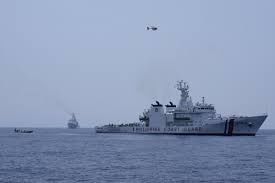
Why in News?
During the fifth meeting of the Philippines-India Joint Commission on Bilateral Cooperation in New Delhi on June 29, the Foreign Ministers of India and the Philippines, S. Jaishankar and Enrique Manalo, respectively, discussed enhancing the bilateral partnership between the two countries. The meeting focused on maritime cooperation and addressing the South China Sea issue
Central Idea
- With a shared history of diplomatic relations spanning nearly 75 years and common maritime interests, the External Affairs Minister of India, S. Jaishankar, and the Secretary for Foreign Affairs of the Philippines, Enrique Manalo, laid out a roadmap to enhance the bilateral partnership in the 21st century.
Significance and developments emerged from the meeting
- Establishment of a resident defense attaché office in Manila: The decision to open a resident defense attaché office in Manila reflects a deeper commitment to defense cooperation between India and the Philippines. This move will facilitate closer coordination, information sharing, and joint defense initiatives.
- Increased collaboration between the Coast Guards: The Coast Guards of India and the Philippines will enhance their collaboration, aiming to strengthen maritime security in the region. This includes joint patrols, information exchange, and joint operations to combat maritime threats.
- Manila’s acquisition of naval assets with concessional credit from India: To bolster its maritime capabilities, the Philippines will acquire naval assets with the help of a concessional line of credit extended by India. This support will enhance the Philippines’ maritime defense capabilities and contribute to maintaining regional stability.
- Expanded training and joint exercises on maritime security and disaster responses: Both countries will expand their training programs and conduct joint exercises focused on maritime security and disaster response. This cooperation will enhance operational readiness and preparedness to address maritime challenges, including disaster relief efforts.
The South China Sea issue: A significant topic of discussion
- Agreement on regional and multilateral issues: Both India and the Philippines reached an agreement on regional and multilateral matters, particularly emphasizing the importance of maritime highways like the South China Sea.
- India’s position on international law and the 2016 Arbitral Award:
- India reiterated its consistent position of adhering to international law, including the United Nations Convention on the Law of the Sea (UNCLOS).
- Notably, India made an unambiguous call to respect the 2016 Arbitral Award on the South China Sea, which represents a departure from India’s previous stance.
- This shift signifies India’s recognition of the legitimacy of the Arbitral Award.
- Background of the Arbitration Case: The Philippines had submitted a case for arbitration to the Permanent Court of Arbitration (PCA) to address its disputes with China in the South China Sea. Despite China’s formal withdrawal from the arbitration, the proceedings continued under UNCLOS guidelines.
- Key findings of the Arbitral Award:
- The PCA’s Award, released on July 12, 2016, rejected China’s claims of historical rights in the South China Sea.
- The tribunal determined that any claims to resources within the nine-dash line were unfounded.
- It also found that China had violated the Philippines’ sovereign rights in its Exclusive Economic Zone (EEZ) through various actions, including interfering with fishing and petroleum exploration, constructing artificial islands, and failing to prevent Chinese fishermen from operating in the zone.
What is Quiet diplomacy?
- Quiet diplomacy refers to a diplomatic approach that focuses on behind-the-scenes negotiations and discussions conducted discreetly, away from public attention and media scrutiny.
- It involves engaging in diplomatic efforts through confidential channels, informal dialogues, and private meetings to address sensitive issues and resolve conflicts.
How Quiet diplomacy could ease South China Sea tensions
- Confidence-Building Measures: Quiet diplomacy can facilitate the implementation of confidence-building measures among the claimant states. This can include agreements on joint military exercises, information sharing, or cooperative initiatives aimed at reducing tensions and building trust.
- Open Communication: Quiet diplomacy allows for confidential and discreet communication between stakeholders, such as China and the claimant states. It provides a platform for open dialogue where concerns and perspectives can be expressed, leading to better understanding and the potential for resolving differences.
- Mediation and Facilitation: Quiet diplomacy may involve the engagement of neutral third-party mediators or facilitators who can assist in bridging differences and guiding the negotiation process. These mediators can provide a neutral perspective, offer expertise, and help facilitate constructive dialogue among the stakeholders.
- Informal Track-II Diplomacy: Quiet diplomacy encourages informal exchanges and dialogues between academic experts, think tanks, and non-governmental organizations. These interactions can provide alternative perspectives, generate innovative ideas, and contribute to a deeper understanding of the issues at hand.
- Crisis Management: Quiet diplomacy can be applicable during times of crisis or heightened tensions in the South China Sea. It allows for confidential crisis management talks between relevant parties, enabling swift and discreet negotiations to de-escalate tensions and seek temporary agreements
Way forward
- Dialogue for Conflict Resolution: The South China Sea issue requires a political framework and dialogue for resolution. Leaders of ASEAN nations are encouraged to engage in “quiet diplomacy to find a political solution, as legal methods may have limitations. Dialogue provides an opportunity for peaceful conflict resolution through negotiations and diplomatic channels.
- Emphasis on a Code of Conduct: The establishment of a legally binding code of conduct is crucial for managing the South China Sea issue. ASEAN leaders are called upon to work towards developing and implementing such a code. A code of conduct can provide guidelines and rules to manage disputes, reduce tensions, and promote stability in the region.
- Regional Unity and Cooperation: Regional cooperation and unity among ASEAN nations are essential to address the South China Sea issue effectively. Greater understanding and coordination among ASEAN members can strengthen their negotiating position and foster a united front in dealing with challenges related to territorial claims and maritime security.
- Respect for International Law: Upholding international law, including UNCLOS, is emphasized in the article. Countries are encouraged to respect legal and diplomatic channels, adhere to their obligations under UNCLOS, and uphold the rights of coastal states. Adherence to international law is essential for maintaining stability, resolving disputes, and promoting a rules-based order in the South China Sea.
Conclusion
- By committing to a rules-based order and emphasizing the significance of international law, India underscores its commitment to regional stability and peace. The need for dialogue, political frameworks, and unity among ASEAN nations is crucial to achieving a peaceful resolution in the South China Sea, protecting vital maritime commons, and ensuring the uninterrupted flow of global trade.
Source: HT
50th meeting of GST Council
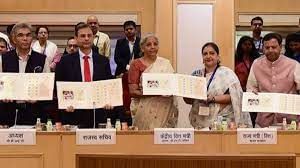
Why in News?
The Goods and Services Tax (GST) Council, at its 50th meeting recently, reduced or clarified the tax rate on some items.
Recommendations of 50th meeting of GST Council
- Changes in GST Rates of Goods:
- Reduced Rates for Snack Pellets and Imitation Zari Thread: The Council has decided to reduce the GST rate on uncooked/unfried snack pellets to 5%.
- Exemptions for Medicines and Food for Special Medical Purposes: To support the treatment of rare diseases enlisted under the National Policy for Rare Diseases, 2021, the Council has exempted IGST on medicines and Food for Special Medical Purposes (FSMP) when imported for personal use. IGST exemption is also granted for Dinutuximab (Quarziba) medicine when imported for personal use.
- On Casinos, Race Courses and Online Gaming:
- The council decided to impose 28% GST on the entire transaction value in the case of online gaming, horse racing and casinos.
- Recommendations on Measures for Facilitation of Trade:
- Establishment of GST Appellate Tribunal: To ensure the smooth functioning of the proposed GST Appellate Tribunal, the Council recommended the rules governing the appointment and conditions of the President and Members of the Tribunal.
- GST Network under ED:
- Many States had raised concerns about bringing the GST Network under the purview of the Prevention of Money Laundering Act (PMLA), administered by the Enforcement Directorate (ED).
- Changes for SUV Vehicles:
- Till now, for a vehicle to be categorised as SUV with higher compensation cess — four conditions had to be met.
- They had to be generally considered an SUV,
- Were longer than four metres,
- An engine of 1500 cc or more, and
- A ground clearance of 170 mm
- The Council has decided to scrap the condition that the vehicle should be popularly seen as an SUV.
- The council has clarified that the ground clearance of 170 mm should be of an unladen vehicle.
- Till now, for a vehicle to be categorised as SUV with higher compensation cess — four conditions had to be met.
Goods and Service Tax (GST)
- About:
- Goods and Services Tax is an indirect tax used in India on the supply of goods and services.
- It is a value-added tax levied on most goods and services sold for domestic consumption.
- It was launched in India in 2017 as a comprehensive indirect tax for the entire country.
- It is a comprehensive, multistage, destination-based tax-
- Comprehensive because it has subsumed almost all the indirect taxes except a few state taxes.
- It is paid by the consumers and is remitted to the government by the businesses selling the goods and services.
- It is of three types i.e.
- CGST to be levied by the Centre,
- SGST to be levied by the States and
- IGST a tax levied on all Inter-State supplies of goods and/or services.
- All these taxes are levied at rates mutually agreed upon by the Centre and the States.
- Governance:
- The GST Council headed by the Union Finance Minister is the governing and key decision-making body for GST.
Significance of GST:
- Better Compliance:
- GST helped in achieving better tax compliance by subsuming multiple taxation and reduction in taxation burden in the last four years.
- Automated tax ecosystem:
- It helped the country in transitioning to an automated indirect tax ecosystem. From electronic compliances, generation of e-invoices to tracking movement of goods through e-waybill - everything is now online
- E-invoice & More Revenue:
- The E-invoicing system helped reduce fake invoicing. Use of technology with online bill generation has resulted in smoother consignment movement and much fewer disputes with officials. After the introduction of E-invoice, GST collections have risen steadily since November 2020, surpassing the Rs. 1 lakh crore mark on several occasions.
- Logistical efficiency, production cost cut:
- Another major achievement of this regime is the fact that over 50% of logistics effort and time is saved since GST has ensured the removal of multiple checkpoints and permits at state border checkpoints.
- Lesser transaction costs:
- After the introduction of GST, there has been a significant reduction in transaction costs. This reduction has been a huge breakthrough in the interstate movement of products, allowing the country to boast of a single national unified market for businesses.
- Cooperative Federalism:
- The customs portals are linked with the GST portal for credit availing on imports constitution of the GST Council and ensuring Centre-State partnership in the decision-making process. It ensured cooperative federalism to be its major part.
- Ease of doing business:
- India's ease of doing business ranking has improved significantly in the last four years. Before GST was implemented, India's Ease of Doing Business ranking was 130 in 2016. In 2020, India was ranked 63rd on the list.
- More Freedom:
- Since the GST rate is the same across the country for a particular supply, traders and manufacturers in the organised sectors have gained more freedom to choose the best vendors, suppliers, and other stakeholders with better pricing, regardless of their location.
- Improved Competitiveness:
- GST has improved the competitiveness of domestic industries in the international market by removing hidden and embedded taxes.
Way ahead
- In India, it has been a remarkable achievement and a unique experiment in cooperative federalism.
- It helped the country in transitioning to an automated indirect tax ecosystem.
- GST gave a major boost to the ‘Make in India’ initiative of the Government of India by making goods and services produced in India competitive in the National as well as International market.
Source: PIB
GS-III
Enforcement Directorate (ED)
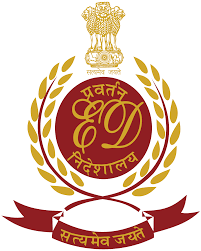
Why in News?
The Supreme Court recently asked Enforcement Directorate (ED) Director Sanjay Kumar Mishra to quit four months before his third extension.
More on News
- The Supreme Court held that the back-to-back service extensions given to Mr. Mishra in 2021 and 2022 were illegal.
- But, it upheld statutory amendments which facilitated the tenures of Directors of the Central Bureau of Investigation and the ED to be extended gradually.
The 2021 Amendments
- The Delhi Special Police Establishment (Amendment) Bill, 2021 and The Central Vigilance Commission (Amendment) Bill, 2021 amended the Delhi Special Police Establishment Act, 1946 and the Central Vigilance Commission Act, 2003, respectively.
- The 1946 Act provides for the constitution of the Delhi Special Police Establishment for investigation of certain offences, as notified and the 2003 Act provides for the constitution of a Central Vigilance Commission to conduct inquiries into offences alleged to have been committed under the Prevention of Corruption Act, 1988.
- Extension of the Director’s term: Both CBI and ED chiefs have fixed tenures of two years. However, 2021 amendments allow them a maximum of three annual extensions. The amendments adds that the tenure of the Director may be extended by up to one year at a time, till the completion of five years from the initial appointment. Such extensions may be granted in public interest, on the recommendation of the Committee.
Procedure to give extensions
- Justice Gavai, who authored the judgment, reasoned that the extensions were not given at the “sweet will” of the government. Instead, the 2021 amendments require High Level Committees to recommend the officers for service extensions.
- A five-member panel composed of the Central Vigilance Commissioner and Vigilance Commissioners had to recommend if an ED Director was worthy of an extension in service.
- In case of the CBI Director, a High-Level Committee of the Prime Minister, Opposition Leader and the Chief Justice of India had to recommend.
Source: TH
Counting down: Launch of Chandrayaan-3 Mission
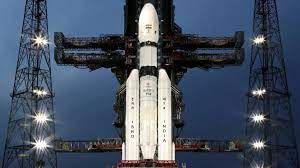
Why in News?
The Indian Space Research Organisation (ISRO) is set to launch the Chandrayaan 3 mission on July 14 from the Satish Dhawan Space Centre, Sriharikota.
- This mission follows the Chandrayaan 2, which encountered technical issues and crash-landed on the moon in September 2019.
Chandrayaan-3: Mission Details and Landing
- Launch Vehicle: Chandrayaan 3 will be launched aboard the Geosynchronous Satellite Launch Vehicle Mark III (GSLV Mk III) rocket.
- Landing Site: The spacecraft is expected to land near the moon’s South Pole.
- Operational Duration: Chandrayaan 3 will operate on the lunar surface for one lunar day, equivalent to 14 Earth days.
Significance of the Lunar South Pole
- Scientific Interest: The lunar South Pole is a compelling location due to the presence of towering massifs and permanently shadowed craters that may contain volatile compounds and water-ice deposits.
- Planetary Formation Insights: Studying the South Pole-Aitken Basin’s age and impact melt could provide insights into planetary formation.
- Valuable Resource: Volatile deposits at the South Pole could serve as a valuable resource for future exploration and astrobiology investigations.
- Solar Power Potential: Some mountain peaks near the pole receive extended periods of sunlight, making them potential sites for continuous solar power supply.
- Fossil Record: Craters at the South Pole may contain a fossil record of the early Solar System, providing valuable scientific data.
Trajectory and Landing Procedure
- Similar to Chandrayaan 2: Chandrayaan 3 will follow a trajectory similar to Chandrayaan 2, utilizing a propulsion module to orbit Earth before heading to the moon.
- Lunar Orbit and Landing: Once within the moon’s gravitational pull, the module will lower itself to a 100 x 100 km circular orbit. The lander will then detach and descend to the lunar surface.
Scientific Payloads
- The Lander: The lander, named ‘Vikram,’ will deploy four scientific payloads to study the moon’s surface temperature and subterranean characteristics.
- The Rover: The rover, named ‘Pragyan,’ will conduct chemical and visual tests as it roves around the lunar surface.
Objectives of Chandrayaan 3
- Safe Landing Demonstration: Chandrayaan 3 aims to demonstrate safe and soft landing on the lunar surface.
- Rover Roving Capability: The mission will showcase the capability of the rover to traverse the lunar surface.
- In-situ Scientific Experiments: Chandrayaan 3 will conduct in-situ scientific experiments on the moon.
Development and Delay
- Development Phase: The development phase for Chandrayaan 3 began in January 2020, with scientists and engineers working on the spacecraft’s design and assembly.
- Manufacturing Delays: The COVID-19 pandemic caused delays in the manufacturing and testing of the propulsion systems.
- Launch Schedule: The launch, initially planned for early 2021, was postponed due to the pandemic. The spacecraft is now set to launch in July 2023.
Importance of Chandrayaan 3
- India’s Third Lunar Mission: Chandrayaan 3 is India’s third lunar mission and the second attempt at a soft landing on the moon.
- Renewed Interest in Lunar Exploration: In recent years, there has been a renewed interest in exploring the moon following Chandrayaan-1’s discovery of water on the lunar surface.
Conclusion
- Chandrayaan 3 represents India’s continuous efforts to explore the moon and achieve a soft landing.
- The mission’s success will contribute to scientific advancements and further our understanding of the lunar surface.
- As space agencies around the world plan future lunar missions, humanity’s return to the moon seems imminent after more than five decades.
Source: Indian Express
HAL’s regional office in Kuala Lumpur
Why in News?
Defence Minister Rajnath Singh inaugurated Hindustan Aeronautics Limited (HAL)’s Regional Office in Kuala Lumpur (Capital of Malaysia).
About
- The Regional Office will facilitate close defence industrial collaboration between India and Malaysia.
- It will also serve as a hub for the HAL’s engagement with the wider South-East Asian region and act as a window for other Indian Defense PSUs.
Key Highlights of Recent Defence Minister visit
- Malaysia is home to the second largest members of the Persons of Indian Origin and has a significant presence of the NRI community.
- The Defence Minister appreciated the rich legacy of Indian classical art tradition in Malaysia as witnessed in the presentations of Odissi dance as well as the Carnatic and Hindustani music performances by renowned Malaysian artists.
- The Defence minister acknowledged the role of the Indian diaspora in the growth story of India. He encouraged them to work honestly for the shared prosperity of India and Malaysia, underlining the spirit of ‘Vasudhaiva Kutumbakam’.
- He also visited Ramakrishna Mission in Petaling Jaya and offered floral tribute to the statue of Swami Vivekananda which was unveiled by Prime Minister Narendra Modi in November 2015.
Source: ET
|
38 videos|5269 docs|1114 tests
|


